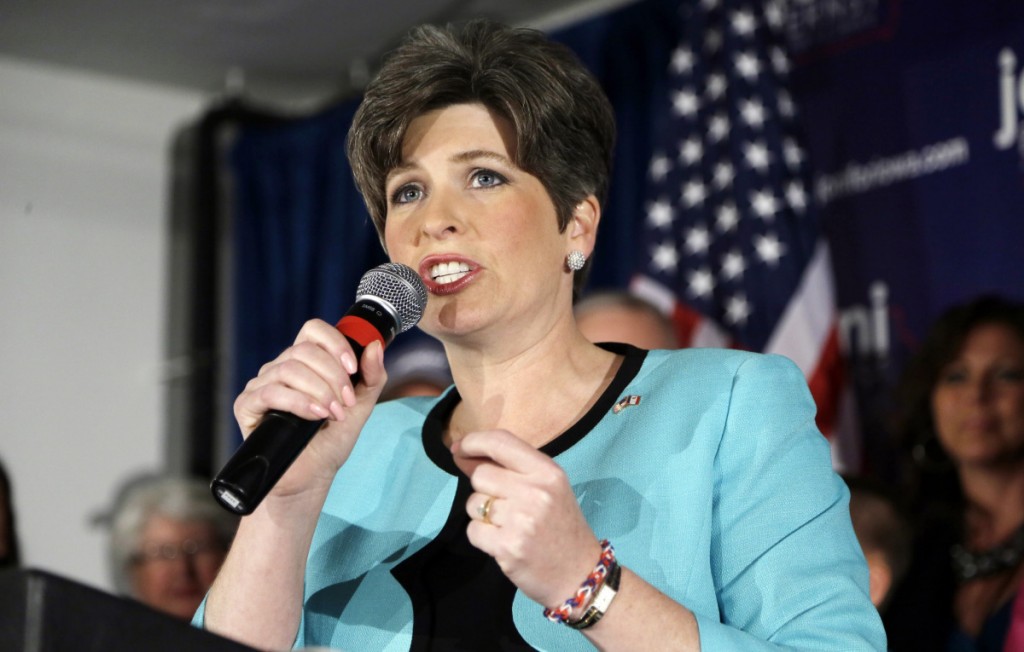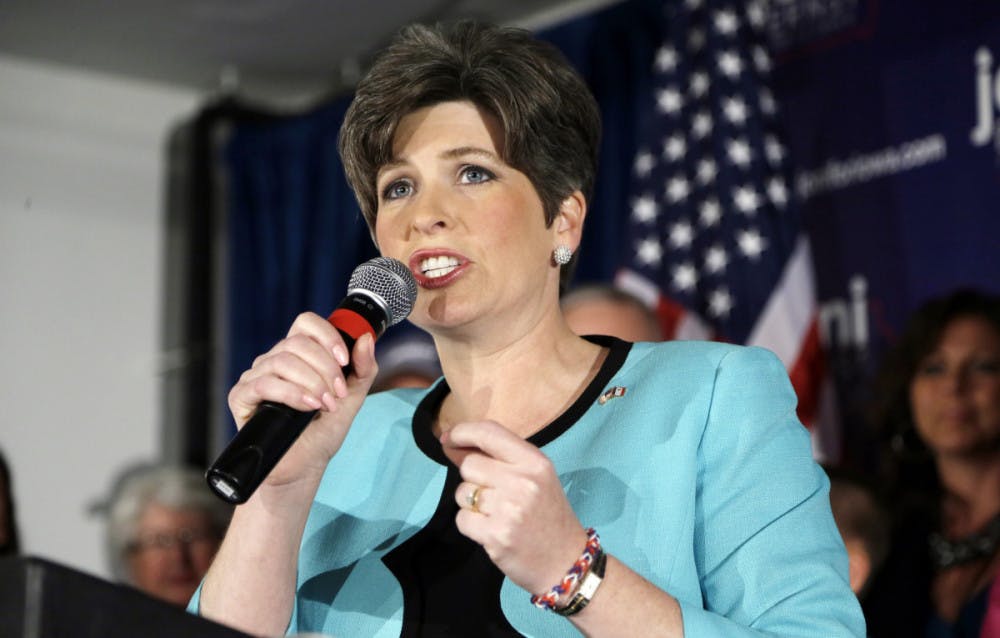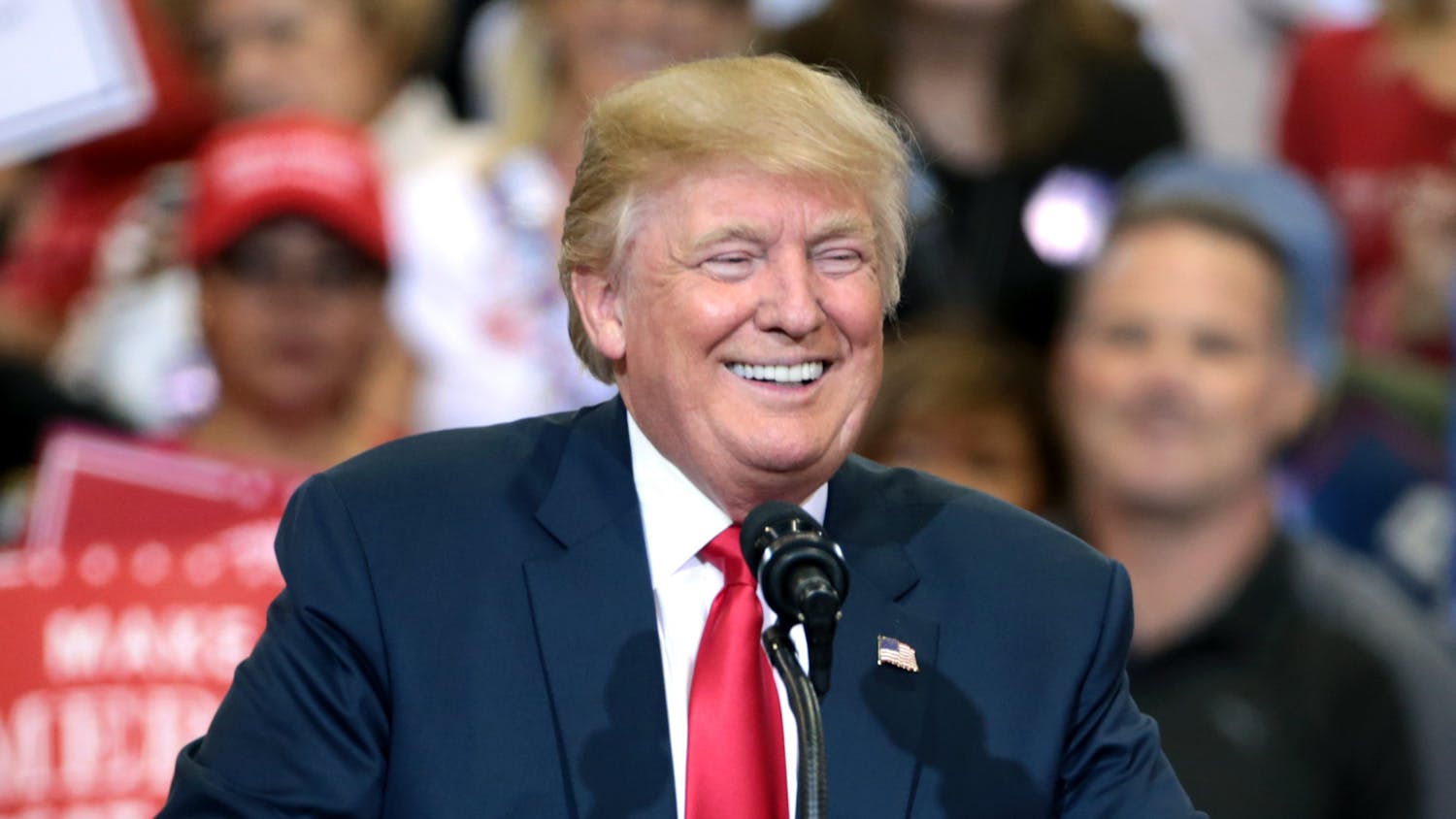By Alyssa Sanford
“Shake it off.”
That’s what U.S. Senate candidate — and eventual winner — Joni Ernst (IA-R) said to a crowd of cheering supporters, after retiring Sen. Tom Harkin (IA-D) called her “really attractive” and “as good-looking as Taylor Swift.”
But Ernst’s wry retort shouldn’t be mistaken for ambivalence. She is outraged by Harkin’s careless remarks, as she should be.

“I believe if my name had been John Ernst on my resume, then-Sen. Harkin would not have said those things,” Ernst told FOX News on Sunday, Nov. 2.
And she is absolutely right.
It’s 2014, and women have had a voice in politics since the passing of the 19th Amendment in 1920. So why aren’t more politicians and voters recognizing it?
Simply because Harkin is a left-leaning politician does not mean that he is immune to misogyny, clearly evidenced by his remarks in a speech supporting Democratic candidate Bruce Braley. Even though Harkin praised Senator-elect Ernst for her good looks, which is enough to undermine her competence as a politician, he went on to say that “if she votes like Michele Bachmann, she is wrong for the state of Iowa.”
The comparison to Bachmann, a radical right-wing politician, is a blow to Ernst’s credibility. Voters distrust Bachmann, and after Harkin’s comment, could stand to distrust all conservative female politicians by extension.
It’s insulting, but it’s not the worst offense in recent history. Sen. Kirsten Gillibrand (NY-D) admitted in her book, “Off The Sidelines,” that male colleagues have referred to her as “chubby” and “porky” in her presence. She also took offense to comments that she is the “hottest member” of the Senate, according to TIME. Sarah Palin is also a victim of lampooning: on “Saturday Night Live,” she was memorably portrayed by Tina Fey and criticized both for her policies and her history as a former pageant queen.
Female politicians are targets, though few and far between. Prior to the election results on Tuesday, Nov. 4, only 20 women held seats in the Senate out of 100 total seats. As for the House of Representatives, out of 435 total seats, 79 women held seats. A special election in North Carolina brought the collective number of women in Congress to a historic total of 100, but Rep. Alma Adams (NC-D) is not expected to hold her new seat for long. The numbers are dismal and difficult to ignore.
According to midterm election reports from the Associated Press, voters “really, really, really” want to see women on the presidential ballot in 2016. For voter Reginald Valentine Sr. in New York, appointing Hillary Clinton to the Oval Office could be just what this country needs. While reassuring that the general public believes women in politics need to claim the ultimate seat of power, it’s equally distressing.
Are female politicians mere “token” items on ballots? Is the election of a female candidate the next in a series of “firsts” on the American voter’s checklist? We’ve seen the first black president move into office, so does it follow that 2016 must mark the election of the first female president? And 2024 the appointment of the first president from the LGBTQ community?
It’s admirable that the American public increasingly wants to see women in power, but a female politician is more than just a token item on a ballot or just a “really attractive” face. These are parameters that limit their credibility instead of giving voters more to celebrate.
If even relatively progressive politicians and voters can’t see that, then female politicians still have a long way to go. But until then, they’ll just have to “shake it off.”







